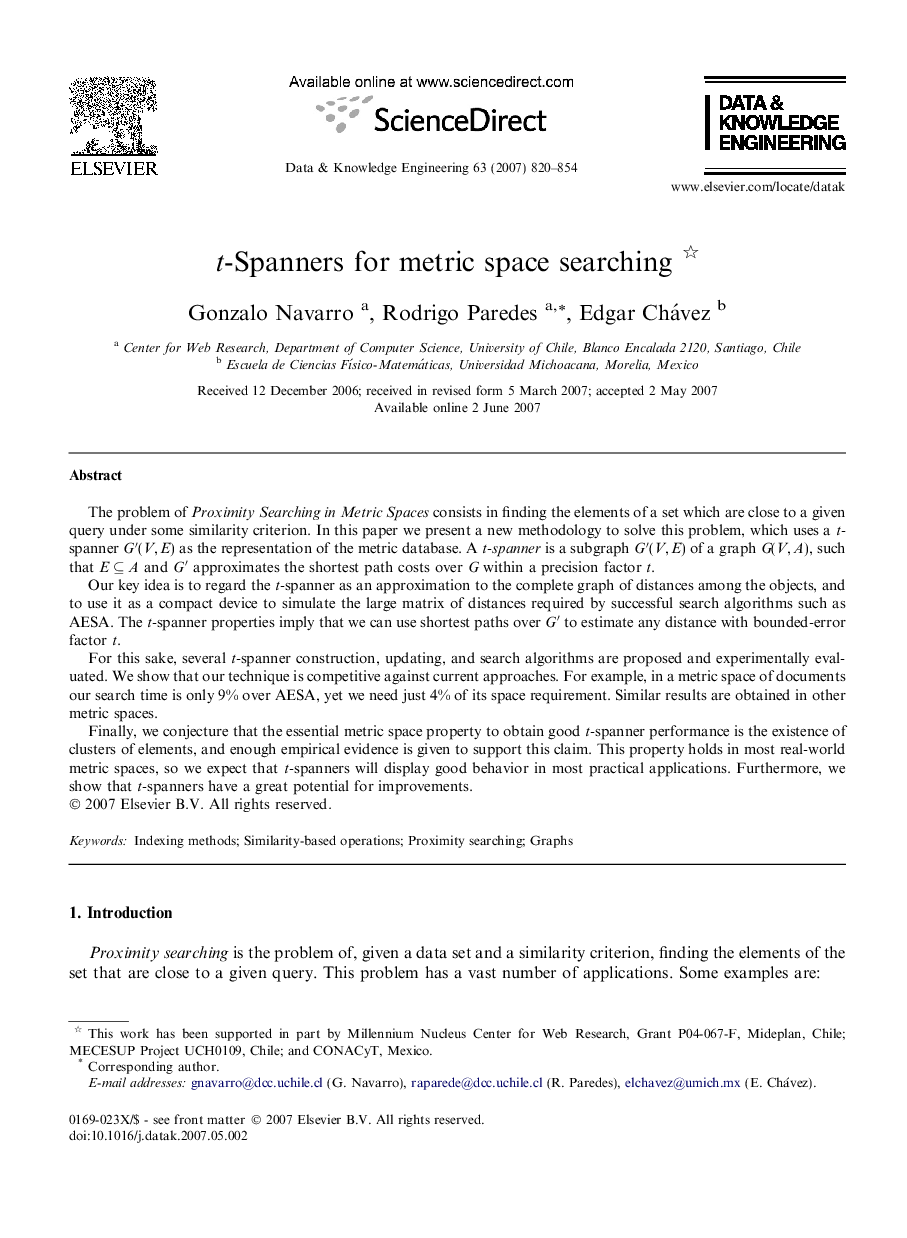| Article ID | Journal | Published Year | Pages | File Type |
|---|---|---|---|---|
| 379194 | Data & Knowledge Engineering | 2007 | 35 Pages |
The problem of Proximity Searching in Metric Spaces consists in finding the elements of a set which are close to a given query under some similarity criterion. In this paper we present a new methodology to solve this problem, which uses a t-spanner G′(V, E) as the representation of the metric database. A t-spanner is a subgraph G′(V, E) of a graph G(V, A), such that E ⊆ A and G′ approximates the shortest path costs over G within a precision factor t.Our key idea is to regard the t-spanner as an approximation to the complete graph of distances among the objects, and to use it as a compact device to simulate the large matrix of distances required by successful search algorithms such as AESA. The t-spanner properties imply that we can use shortest paths over G′ to estimate any distance with bounded-error factor t.For this sake, several t-spanner construction, updating, and search algorithms are proposed and experimentally evaluated. We show that our technique is competitive against current approaches. For example, in a metric space of documents our search time is only 9% over AESA, yet we need just 4% of its space requirement. Similar results are obtained in other metric spaces.Finally, we conjecture that the essential metric space property to obtain good t-spanner performance is the existence of clusters of elements, and enough empirical evidence is given to support this claim. This property holds in most real-world metric spaces, so we expect that t-spanners will display good behavior in most practical applications. Furthermore, we show that t-spanners have a great potential for improvements.
